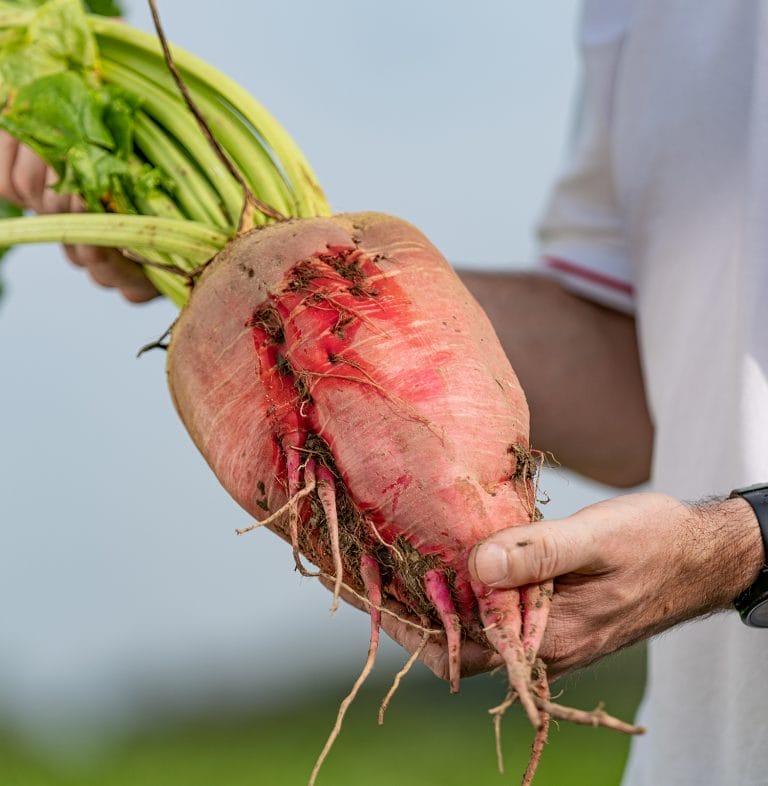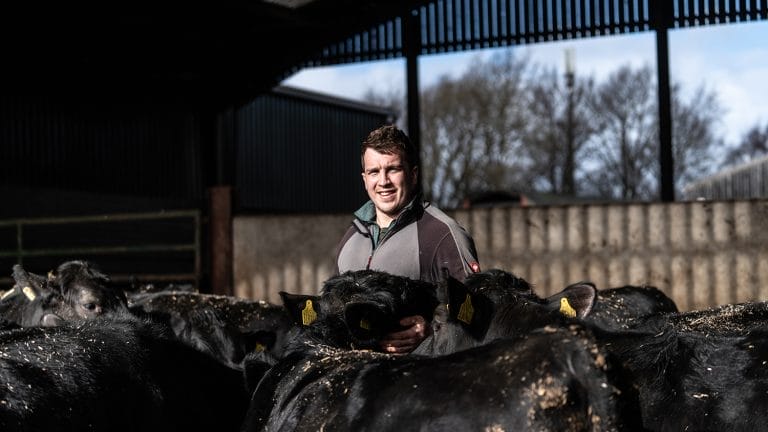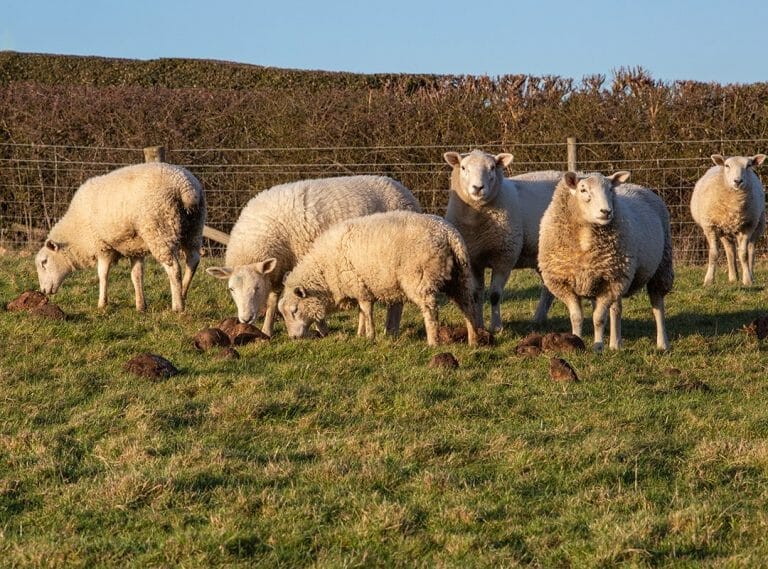A dry autumn and limited grass growth, coupled with high bought-in feed prices, are making dairy producers consider how best they can increase output from their forage-growing area. Limagrain UK’s John Spence suggests throwing the net a bit wider and looking at some high-feed-value spring-sown crops.
“These include kale rape hybrids, new bounce-back brassicas, and fodder beet,” he says, adding they can all provide a high-feed-value crop and give the grass rotation a valuable break.
 “The starting point, when it comes to crop planning in spring, is deciding which grass swards need attention, as on most dairy farms this is the staple crop.”
“The starting point, when it comes to crop planning in spring, is deciding which grass swards need attention, as on most dairy farms this is the staple crop.”
A good first cut of grass silage, taken in the first two weeks of May from a high yielding conservation ley, should yield six tonnes of dry matter per hectare.
Limagrain published data from grass-seed-mixture trials across four consecutive years, from 2017 to 2020, which showed at least this level of yield in commercially available conservation mixtures. But, regardless of mixture, yield and quality declined year-on-year.
“Overall we recorded a reduction in yield of five tonnes of dry matter per hectare from the peak in year one to year four, representing a 40% drop,” says Mr Spence. “Five tonnes of dry matter would provide the energy to produce £3,280-worth of milk, based on a milk price of 30ppl.
“Estimated reseeding costs are between £430 and £700 per hectare, so it offers a clear return on investment. So putting up with poor grass is a false economy.”
A spring or summer sown forage crop can be a useful circuit breaker between grass crops for grassland pests, particularly in the light of the pesticide ban on grassland.
And these fast-growing, high-yielding forages, such as a forage brassica crop, for grazing in mid to late summer when grass gets short, are appealing on many farms.”
Hybrid brassicas and forage rape are sown from May until July. They grow fast and are typically ready to graze in between 12 and 14 weeks.
“These crops have deep roots, so they’re ideal if it’s dry – the sort of conditions we’re seeing more often. And they’re typically grazed in situ, so nutrients and organic matter are returned to the land which boosts soil fertility.”
Feed value is good too, particularly if high-value varieties are used. In Limagrain field trials, where a wide range of commercially available, rape/kale hybrids were compared, with the highest relative dry matter crops, Unicorn and Interval, yielding 11% and 17%respectively,above the control, and offering top scores for mildew resistance too.
Kale crops can also be sown across a few months too, and they u provide an additional forage crop into autumn and winter. Like all brassicas, it has a high protein content, but it will outyield the hybrids. Kale is a relatively economical to grow.
Another good spring-sown crop, which can withstand drought and provide a summer forage supplement for dairy cattle, is the unique bounce-back brassica Skyfall. “Already very successful in sheep systems, it is gaining momentum for dairy and beef systems,” says Mr Spence
Like rape kale hybrids, it’s got a wide sowing window from May to July and is ready to graze within 12 weeks. “It has large strap leaves, which look like stubble turnip leaves, and roots that are deep and elongated – more like a forage rape root – which promotes the crop’s regrowth and drought tolerance.
“After grazing, the crop is then closed up for four weeks to enable the re-growth before grazing again. We’ve seen three grazing rounds from each crop, with earlier sown crops showing the most bounce-back potential.”
At the end of summer, once these crops are grazed off, the land can be ploughed, and a grass or winter cereal crop sown. Or the land can be left for reseeding until the following spring to ensure a break in the pest cycle.
Power-house
Fodder beet is another spring-sown crop with very high feed value. Alongside maize, it is energy rich and provides a palatable ‘powerhouse’ in dairy rations.
While Mr Spence suggests light to medium free-draining soils are most suited to growing fodder beet, it will thrive on a wide range of soil types. “It’s a crop that that is well suited to the UK climate. It will produce consistent yields in wet or dry conditions, so our drier summers are not too much of a threat to this crop,” he says.
 For the past five years Limagrain has been exporting fodder beet seed to New Zealand for grazing dairy cattle – both milkers and young stock. “It’s taken off among their milk producers, who graze the crop in situ. They use the same varieties as we grow here and, as in the UK, the maritime climate suits the crop.
For the past five years Limagrain has been exporting fodder beet seed to New Zealand for grazing dairy cattle – both milkers and young stock. “It’s taken off among their milk producers, who graze the crop in situ. They use the same varieties as we grow here and, as in the UK, the maritime climate suits the crop.
“But consider the land type first for out wintering grazing systems. Heavy, wet land can make moving fences daily, or every few days, hard work. But where it will work, producers can place fresh silage bales at the end of rows and create a sort of ‘in situ’ TMR and we see cattle thrive on this diet.”
Areas where beet lifting equipment is available lend themselves to using the crop in TMR systems. It can be lifted and clamped and used through winter.
Varieties with medium dry matters, with 60% of the root out of the ground are best suited to dairy systems, either for using in the TMR or for grazing. Popular varieties in dairy systems are Robbos or Blaze.
“There are some very good options for spring sown forages,” adds Mr Spence. “I would encourage some research and looking at the suitability of each crop for the own farm and system, and also to be discerning in the choice of variety for each crop.
“There’s been significant progress in feed value between varieties and some modern choices boast much better feed values, which will be welcome news for many producers looking to maintain or improve cost of milk production.”


































